Lecture 4 Carroll Izard and

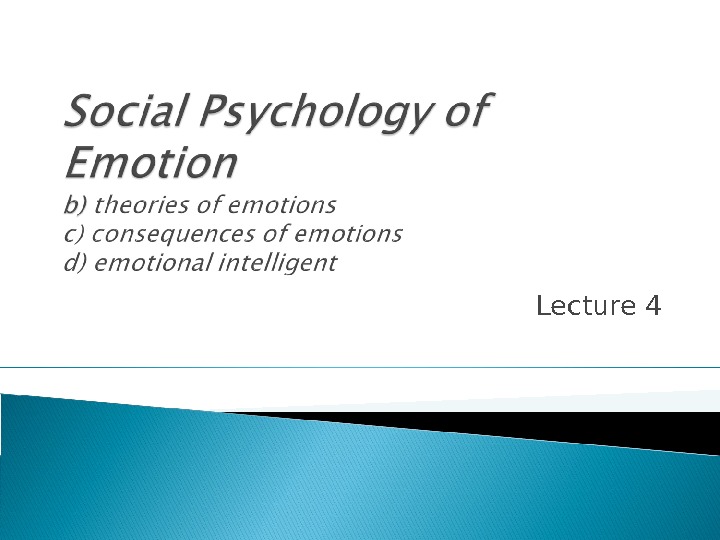
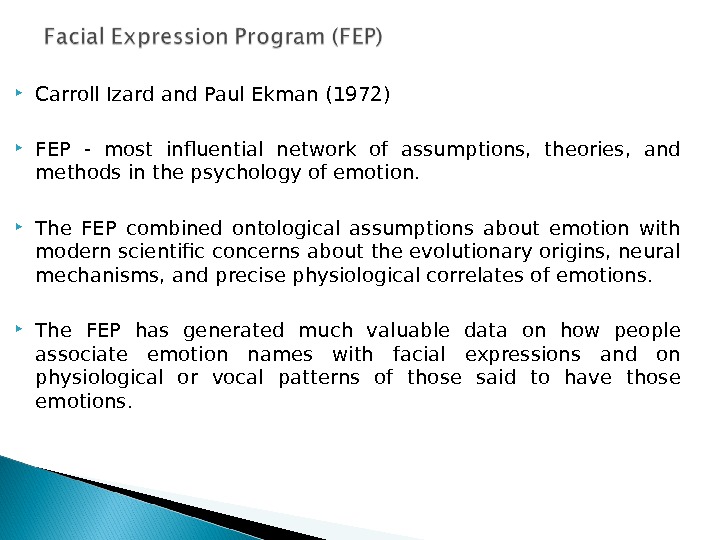




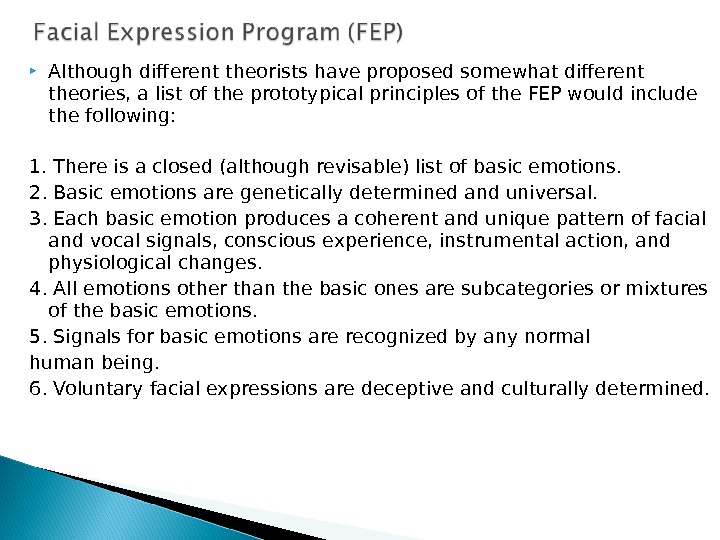

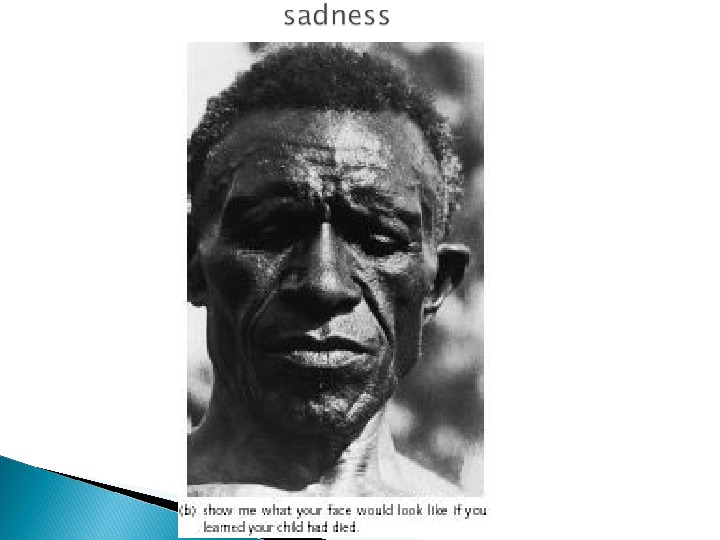


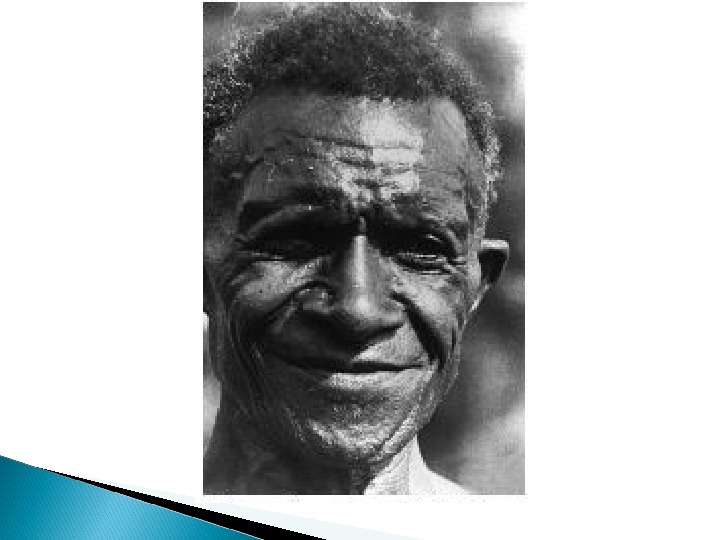
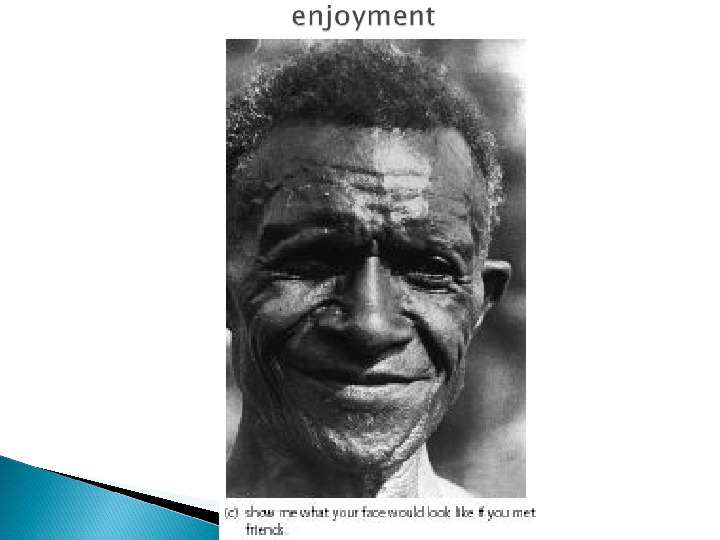






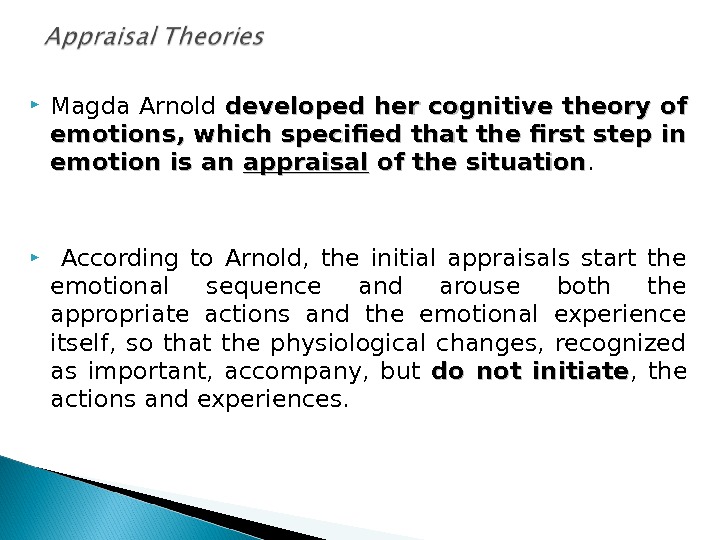
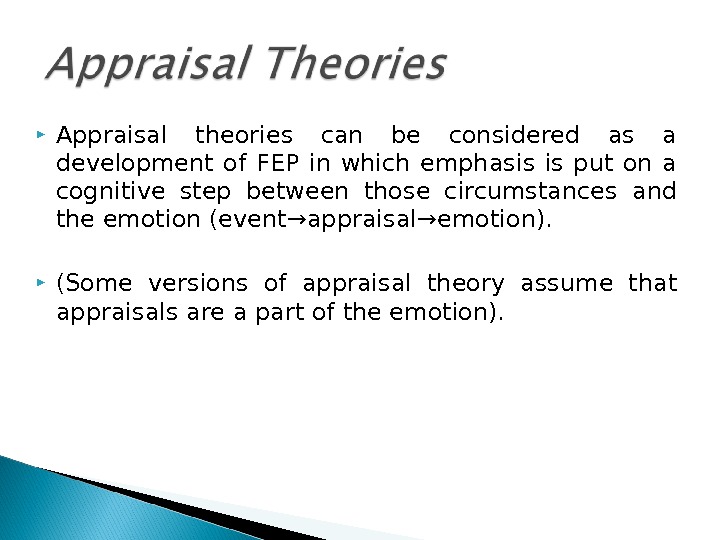
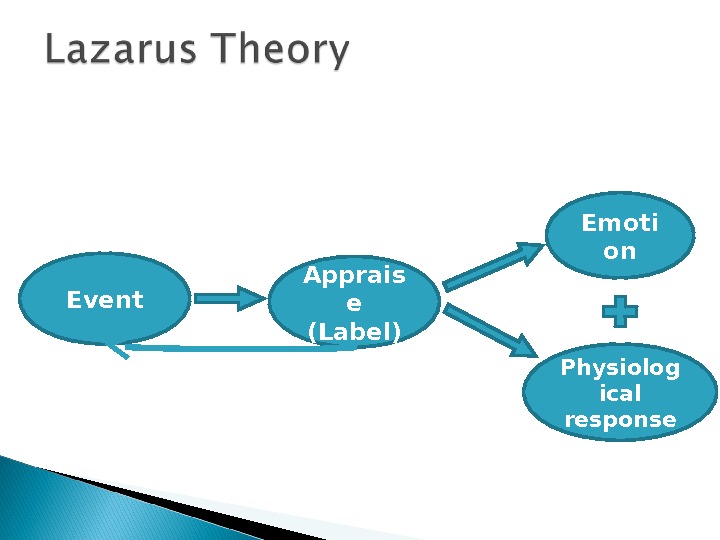

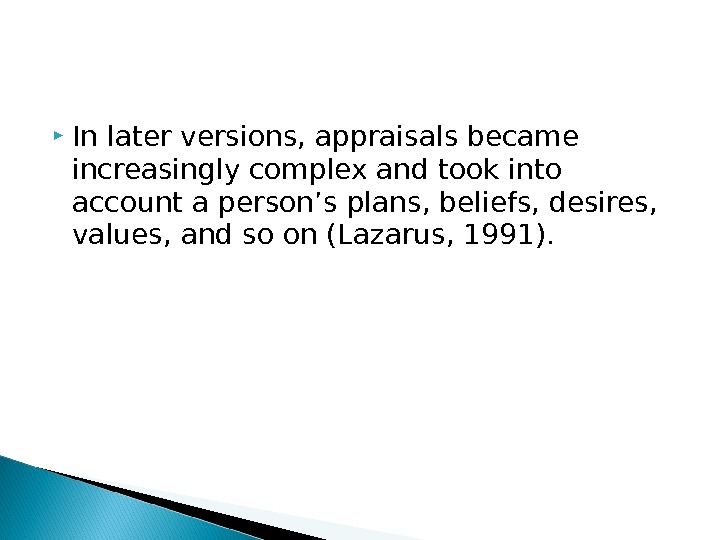

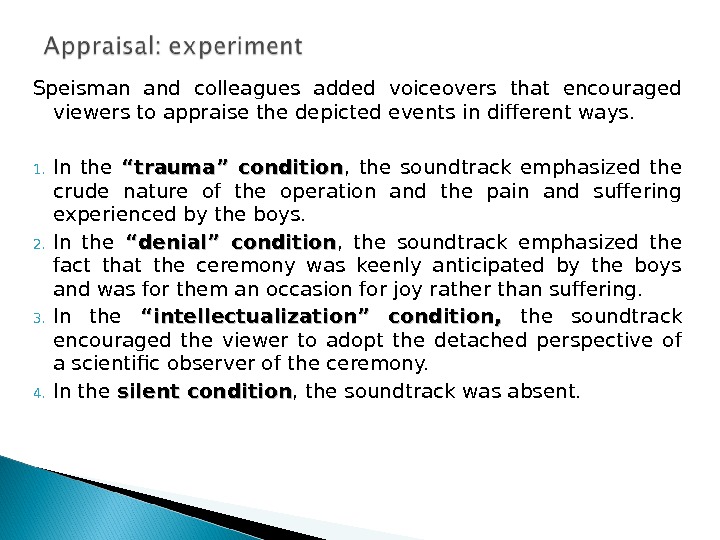

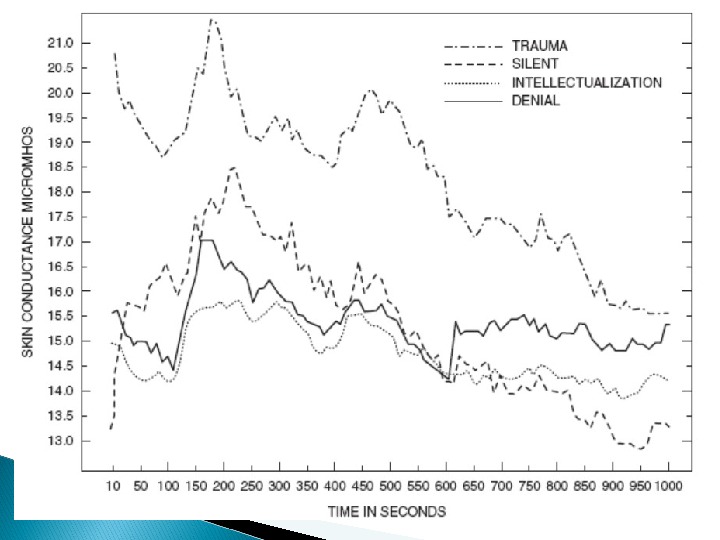
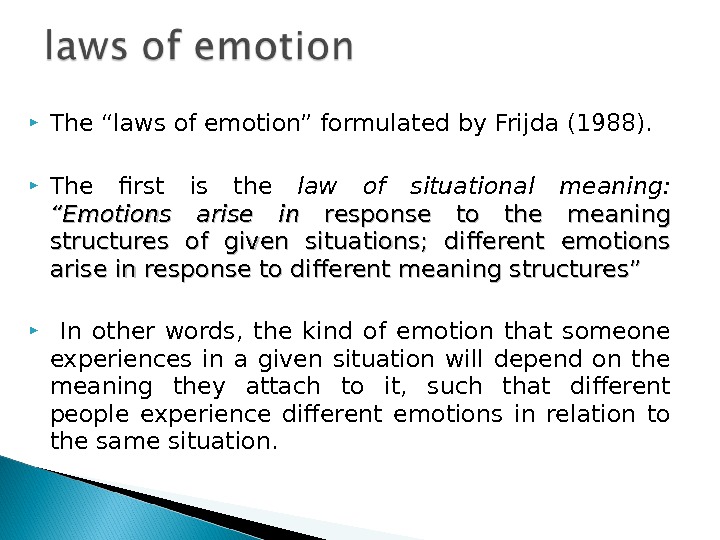

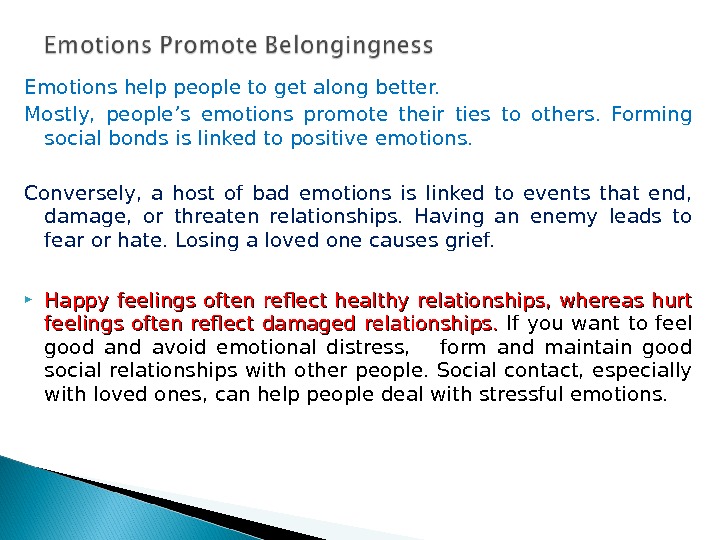
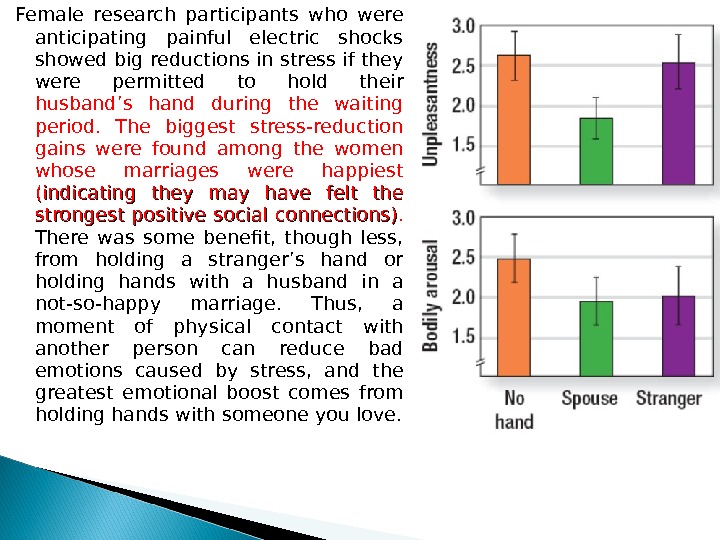
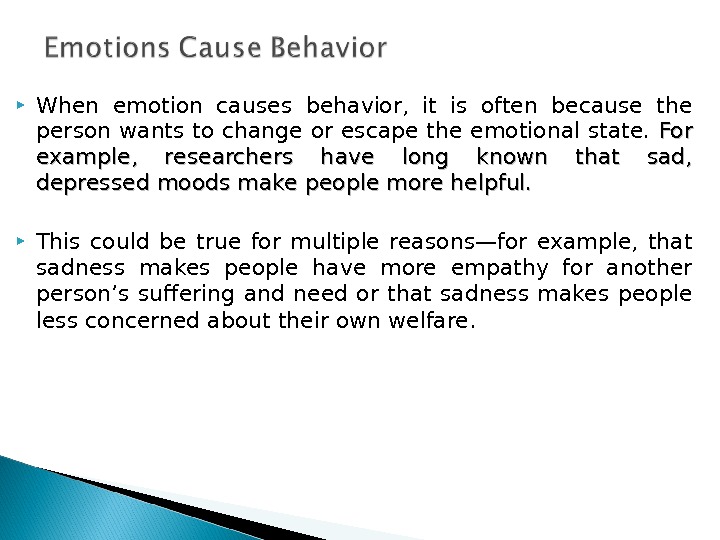
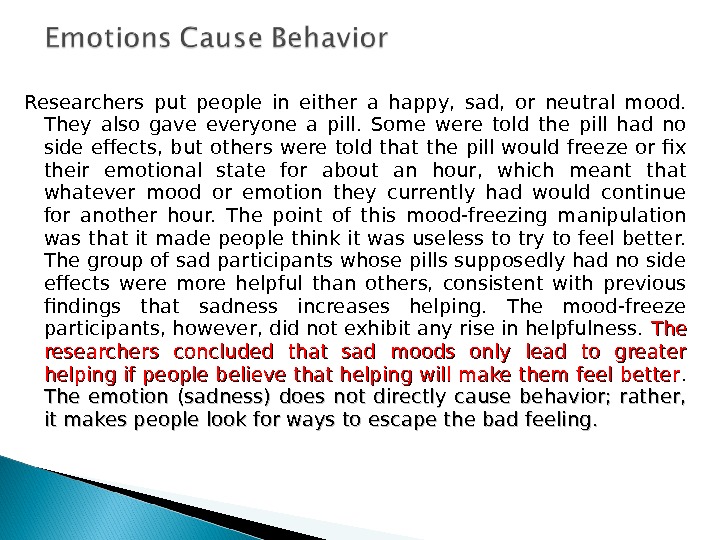
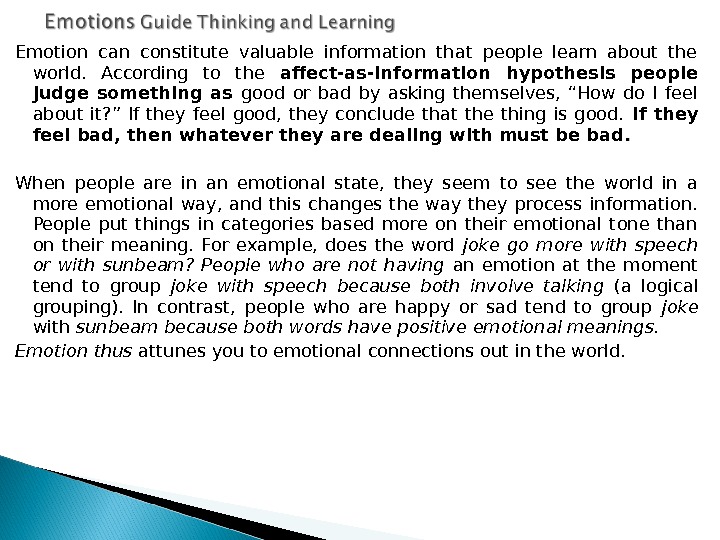

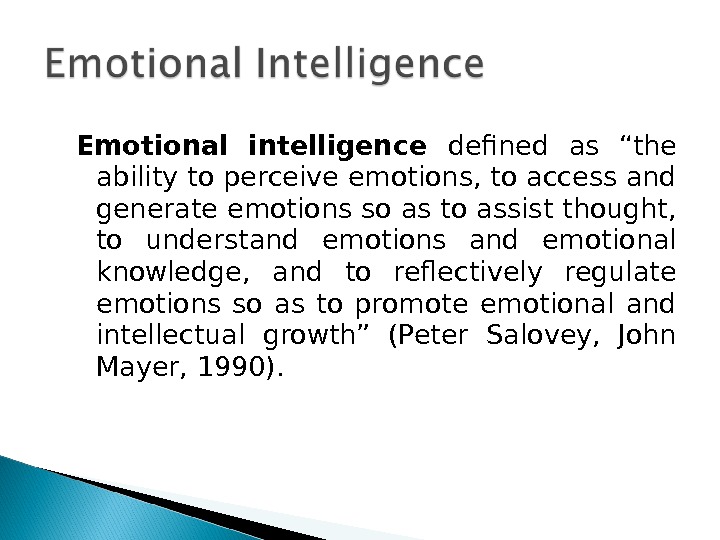
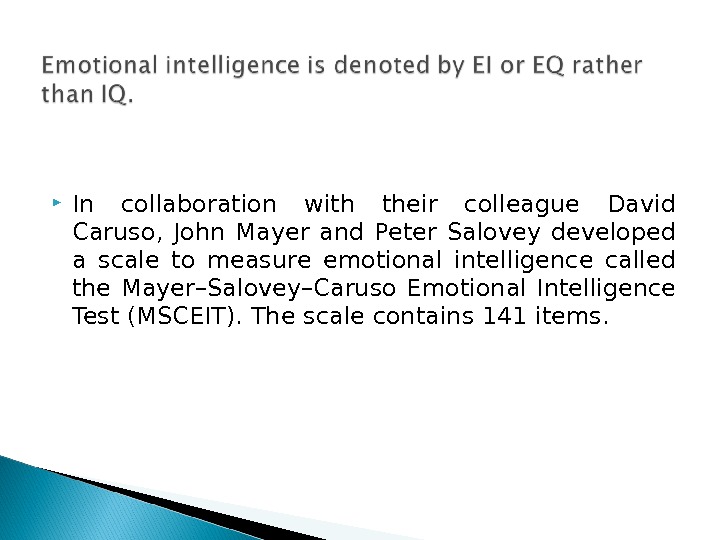


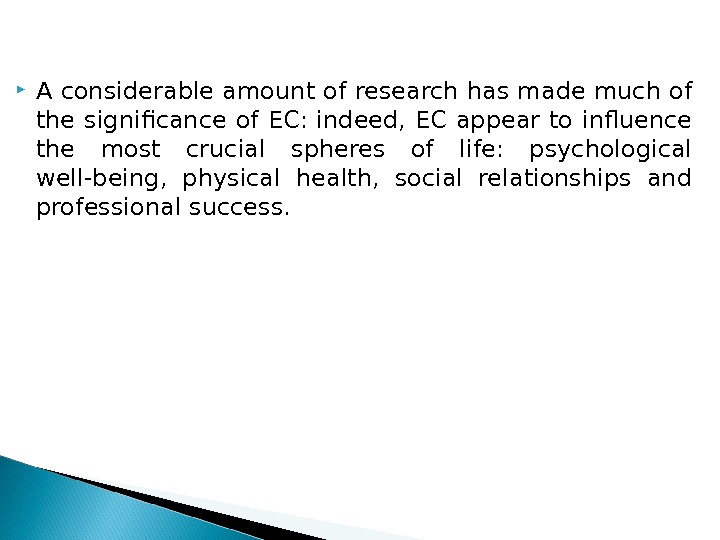



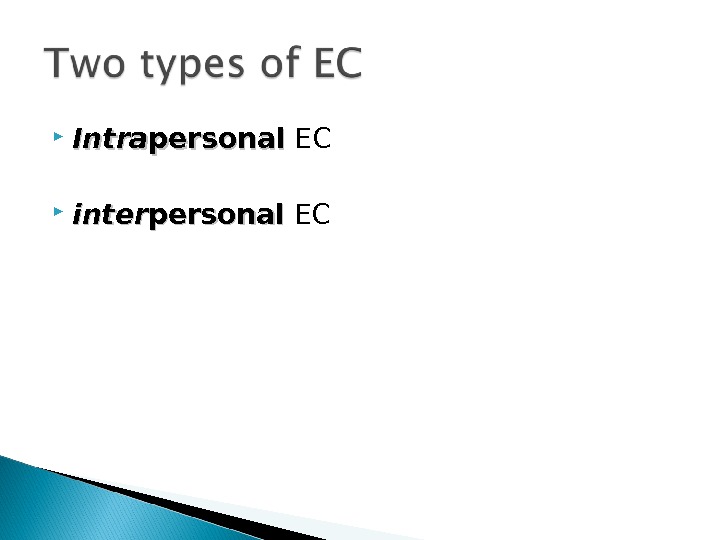
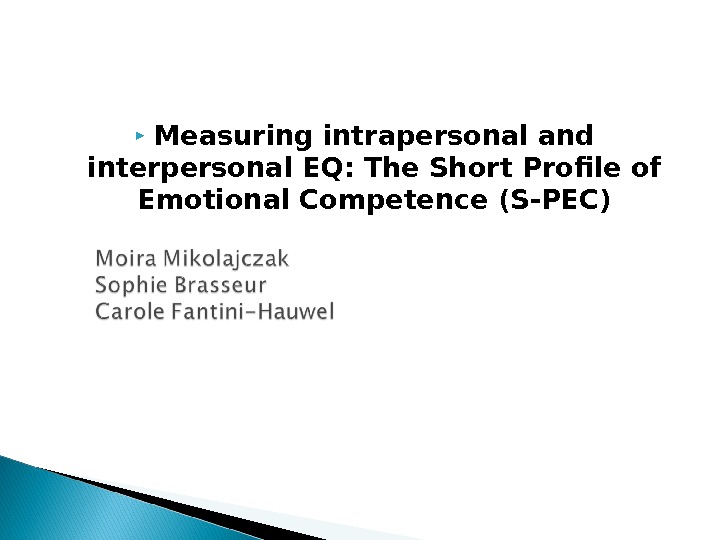
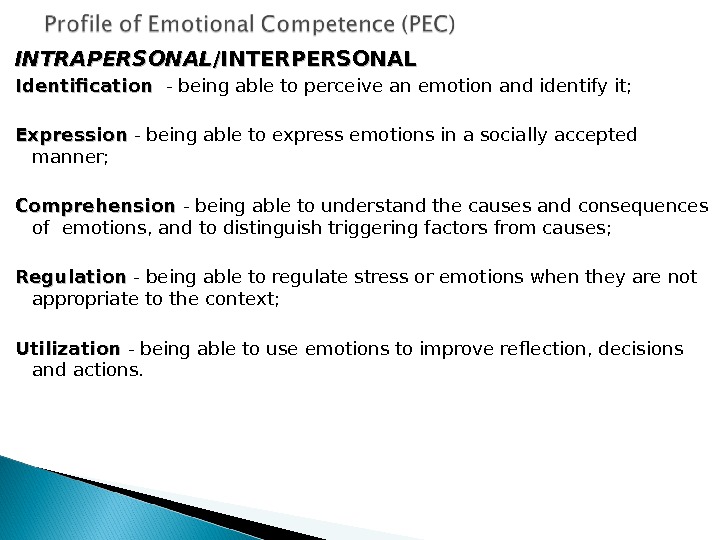
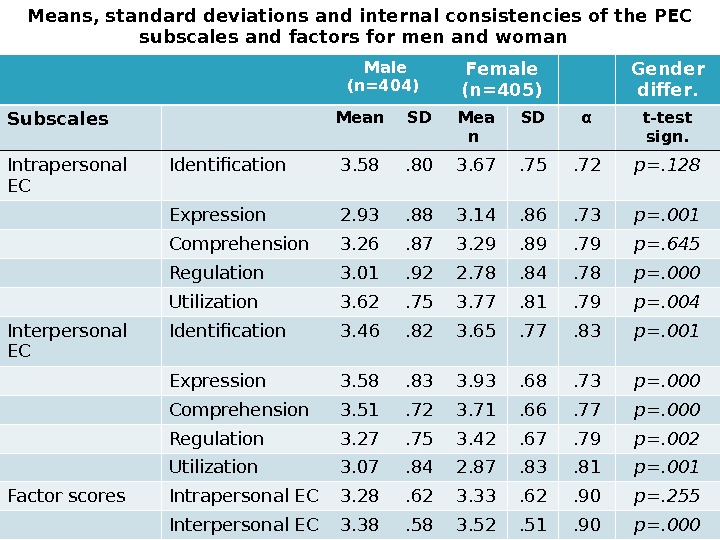

- Размер: 3.8 Mегабайта
- Количество слайдов: 49
Описание презентации Lecture 4 Carroll Izard and по слайдам
 Lecture
Lecture
 Carroll Izard and Paul Ekman (1972) FEP — most influential network of assumptions, theories, and methods in the psychology of emotion. The FEP combined ontological assumptions about emotion with modern scientific concerns about the evolutionary origins, neural mechanisms, and precise physiological correlates of emotions. The FEP has generated much valuable data on how people associate emotion names with facial expressions and on physiological or vocal patterns of those said to have those emotions.
Carroll Izard and Paul Ekman (1972) FEP — most influential network of assumptions, theories, and methods in the psychology of emotion. The FEP combined ontological assumptions about emotion with modern scientific concerns about the evolutionary origins, neural mechanisms, and precise physiological correlates of emotions. The FEP has generated much valuable data on how people associate emotion names with facial expressions and on physiological or vocal patterns of those said to have those emotions.
 Ekman (1972) called his own theory neurocultural. Culture influences the observable elements surrounding emotion, but not the unobservable emotion itself.
Ekman (1972) called his own theory neurocultural. Culture influences the observable elements surrounding emotion, but not the unobservable emotion itself.
 Universality of facial expressions ◦ Charles Darwin First to study the relationship between emotions and facial expressions Believed that the facial expression of emotion was an aid to survival because it enabled people to communicate their internal states and react to emergencies before they developed language Maintained that most emotions, and the facial expressions that convey them, are genetically inherited and characteristic of the entire human species. Concluded that facial expressions were similar across cultures
Universality of facial expressions ◦ Charles Darwin First to study the relationship between emotions and facial expressions Believed that the facial expression of emotion was an aid to survival because it enabled people to communicate their internal states and react to emergencies before they developed language Maintained that most emotions, and the facial expressions that convey them, are genetically inherited and characteristic of the entire human species. Concluded that facial expressions were similar across cultures
 Izard and Ekman traced their intellectual roots to Charles Darwin’s Expression of the Emotions in Man and Animals. In the hands of Izard and Ekman the emphasis shifted back to facial movements as genuine expressions and even more to the emotions expressed.
Izard and Ekman traced their intellectual roots to Charles Darwin’s Expression of the Emotions in Man and Animals. In the hands of Izard and Ekman the emphasis shifted back to facial movements as genuine expressions and even more to the emotions expressed.
 Ekman (1972) included in the list of basic emotions: happiness, fear, sadness, anger, surprise , and disgust and more recently added contemp t (Ekman & Friesen, 1986). Basic emotions are repackaged neural programs that can be detected in all human beings as well as in other species. Other emotions, such as love, jealousy, shame are blends, mixtures, subcategories, or synonyms of the basic emotions.
Ekman (1972) included in the list of basic emotions: happiness, fear, sadness, anger, surprise , and disgust and more recently added contemp t (Ekman & Friesen, 1986). Basic emotions are repackaged neural programs that can be detected in all human beings as well as in other species. Other emotions, such as love, jealousy, shame are blends, mixtures, subcategories, or synonyms of the basic emotions.
 Although different theorists have proposed somewhat different theories, a list of the prototypical principles of the FEP would include the following: 1. There is a closed (although revisable) list of basic emotions. 2. Basic emotions are genetically determined and universal. 3. Each basic emotion produces a coherent and unique pattern of facial and vocal signals, conscious experience, instrumental action, and physiological changes. 4. All emotions other than the basic ones are subcategories or mixtures of the basic emotions. 5. Signals for basic emotions are recognized by any normal human being. 6. Voluntary facial expressions are deceptive and culturally determined.
Although different theorists have proposed somewhat different theories, a list of the prototypical principles of the FEP would include the following: 1. There is a closed (although revisable) list of basic emotions. 2. Basic emotions are genetically determined and universal. 3. Each basic emotion produces a coherent and unique pattern of facial and vocal signals, conscious experience, instrumental action, and physiological changes. 4. All emotions other than the basic ones are subcategories or mixtures of the basic emotions. 5. Signals for basic emotions are recognized by any normal human being. 6. Voluntary facial expressions are deceptive and culturally determined.








 Cultural rule for displaying emotion Cultural rules dictate how emotions should be expressed and when and where their expression is appropriate. ◦ Often, a society’s display rules require people to give evidence of certain emotions that they may not actually feel or to disguise their true feelings
Cultural rule for displaying emotion Cultural rules dictate how emotions should be expressed and when and where their expression is appropriate. ◦ Often, a society’s display rules require people to give evidence of certain emotions that they may not actually feel or to disguise their true feelings
 The Japanese participants agreed to watch the movie again because they did not want to show the researchers their negative opinion of the movie and negative emotions related to this movie.
The Japanese participants agreed to watch the movie again because they did not want to show the researchers their negative opinion of the movie and negative emotions related to this movie.
 Members of different societies learn to have different emotions in given situations: Society regulates (through display rules) the observable manifestations of each emotion: A society might believe that boys should show a brave face even when he is sad or frightened.
Members of different societies learn to have different emotions in given situations: Society regulates (through display rules) the observable manifestations of each emotion: A society might believe that boys should show a brave face even when he is sad or frightened.
 Appraisal theories can be considered as a development of FEP.
Appraisal theories can be considered as a development of FEP.
 Magda Arnold developed her cognitive theory of of emotions, which specified that the first step in emotion is an appraisal of the situation. According to Arnold, the initial appraisals start the emotional sequence and arouse both the appropriate actions and the emotional experience itself, so that the physiological changes, recognized as important, accompany, but do not initiate , the actions and experiences.
Magda Arnold developed her cognitive theory of of emotions, which specified that the first step in emotion is an appraisal of the situation. According to Arnold, the initial appraisals start the emotional sequence and arouse both the appropriate actions and the emotional experience itself, so that the physiological changes, recognized as important, accompany, but do not initiate , the actions and experiences.
 Appraisal theories can be considered as a development of FEP in which emphasis is put on a cognitive step between those circumstances and the emotion (event→appraisal→emotion). (Some versions of appraisal theory assume that appraisals are a part of the emotion).
Appraisal theories can be considered as a development of FEP in which emphasis is put on a cognitive step between those circumstances and the emotion (event→appraisal→emotion). (Some versions of appraisal theory assume that appraisals are a part of the emotion).
 Event Apprais e (Label) Emoti on Physiolog ical response
Event Apprais e (Label) Emoti on Physiolog ical response
 An appraisal provides an explanation for: (a) which situations lead to which emotions; (b) individual differences in the stimulus-response link. For example, if you appraise dogs as threats, then, for you, dog → threat → fear; but if you like dogs, then dog → good → happy. The main question then becomes the nature of appraisal.
An appraisal provides an explanation for: (a) which situations lead to which emotions; (b) individual differences in the stimulus-response link. For example, if you appraise dogs as threats, then, for you, dog → threat → fear; but if you like dogs, then dog → good → happy. The main question then becomes the nature of appraisal.
 In later versions, appraisals became increasingly complex and took into account a person’s plans, beliefs, desires, values, and so on (Lazarus, 1991).
In later versions, appraisals became increasingly complex and took into account a person’s plans, beliefs, desires, values, and so on (Lazarus, 1991).
 More compelling evidence of a causal relation between appraisal and emotion comes from experimental studies in which attempts are made to manipulate the nature of the appraisals made by participants to examine the consequences for measures of emotional response. An early example is a study reported by Speisman, Lazarus, Mordkoff, and Davison. Participants were shown an excerpt from a film depicting a rite of passage in the lives of males in aboriginal tribes in Australia, marking the transition from boyhood to manhood. The rite entails operating on the boys’ genitals using flint stones.
More compelling evidence of a causal relation between appraisal and emotion comes from experimental studies in which attempts are made to manipulate the nature of the appraisals made by participants to examine the consequences for measures of emotional response. An early example is a study reported by Speisman, Lazarus, Mordkoff, and Davison. Participants were shown an excerpt from a film depicting a rite of passage in the lives of males in aboriginal tribes in Australia, marking the transition from boyhood to manhood. The rite entails operating on the boys’ genitals using flint stones.
 Speisman and colleagues added voiceovers that encouraged viewers to appraise the depicted events in different ways. 1. In the “trauma” condition , the soundtrack emphasized the crude nature of the operation and the pain and suffering experienced by the boys. 2. In the “denial” condition , the soundtrack emphasized the fact that the ceremony was keenly anticipated by the boys and was for them an occasion for joy rather than suffering. 3. In the “intellectualization” condition, the soundtrack encouraged the viewer to adopt the detached perspective of a scientific observer of the ceremony. 4. In the silent condition , the soundtrack was absent.
Speisman and colleagues added voiceovers that encouraged viewers to appraise the depicted events in different ways. 1. In the “trauma” condition , the soundtrack emphasized the crude nature of the operation and the pain and suffering experienced by the boys. 2. In the “denial” condition , the soundtrack emphasized the fact that the ceremony was keenly anticipated by the boys and was for them an occasion for joy rather than suffering. 3. In the “intellectualization” condition, the soundtrack encouraged the viewer to adopt the detached perspective of a scientific observer of the ceremony. 4. In the silent condition , the soundtrack was absent.
 Next Figure shows the mean skin conductance levels (SCL) in the four conditions of the experiment. SCL is one index of autonomic nervous system activity and reflects the type of arousal associated with stress. There are clear between-condition differences showing that the trauma voiceover enhanced SCL whereas the denial and intellectualization conditions attenuated it, relative to the silent control condition.
Next Figure shows the mean skin conductance levels (SCL) in the four conditions of the experiment. SCL is one index of autonomic nervous system activity and reflects the type of arousal associated with stress. There are clear between-condition differences showing that the trauma voiceover enhanced SCL whereas the denial and intellectualization conditions attenuated it, relative to the silent control condition.

 The “laws of emotion” formulated by Frijda ( 1988 ). The first is the law of situational meaning: “Emotions arise in response to the meaning structures of given situations; different emotions arise in response to different meaning structures” In other words, the kind of emotion that someone experiences in a given situation will depend on the meaning they attach to it, such that different people experience different emotions in relation to the same situation.
The “laws of emotion” formulated by Frijda ( 1988 ). The first is the law of situational meaning: “Emotions arise in response to the meaning structures of given situations; different emotions arise in response to different meaning structures” In other words, the kind of emotion that someone experiences in a given situation will depend on the meaning they attach to it, such that different people experience different emotions in relation to the same situation.
 The second of Frijda’s laws of emotion is the law of concern. It stipulate : ““ Emotions arise in response to events that are important to the individual’s goals, motives, or concerns”. A basic condition for emotion to arise, on this account, is that something happens that is “motivationally relevant” (Smith & Lazarus, 1993 ).
The second of Frijda’s laws of emotion is the law of concern. It stipulate : ““ Emotions arise in response to events that are important to the individual’s goals, motives, or concerns”. A basic condition for emotion to arise, on this account, is that something happens that is “motivationally relevant” (Smith & Lazarus, 1993 ).
 Emotions help people to get along better. Mostly, people’s emotions promote their ties to others. Forming social bonds is linked to positive emotions. Conversely, a host of bad emotions is linked to events that end, damage, or threaten relationships. Having an enemy leads to fear or hate. Losing a loved one causes grief. Happy feelings often reflect healthy relationships, whereas hurt feelings often reflect damaged relationships. If you want to feel good and avoid emotional distress, form and maintain good social relationships with other people. Social contact, especially with loved ones, can help people deal with stressful emotions.
Emotions help people to get along better. Mostly, people’s emotions promote their ties to others. Forming social bonds is linked to positive emotions. Conversely, a host of bad emotions is linked to events that end, damage, or threaten relationships. Having an enemy leads to fear or hate. Losing a loved one causes grief. Happy feelings often reflect healthy relationships, whereas hurt feelings often reflect damaged relationships. If you want to feel good and avoid emotional distress, form and maintain good social relationships with other people. Social contact, especially with loved ones, can help people deal with stressful emotions.
 Female research participants who were anticipating painful electric shocks showed big reductions in stress if they were permitted to hold their husband’s hand during the waiting period. The biggest stress-reduction gains were found among the women whose marriages were happiest (indicating they may have felt the strongest positive social connections). There was some benefit, though less, from holding a stranger’s hand or holding hands with a husband in a not-so-happy marriage. Thus, a moment of physical contact with another person can reduce bad emotions caused by stress, and the greatest emotional boost comes from holding hands with someone you love.
Female research participants who were anticipating painful electric shocks showed big reductions in stress if they were permitted to hold their husband’s hand during the waiting period. The biggest stress-reduction gains were found among the women whose marriages were happiest (indicating they may have felt the strongest positive social connections). There was some benefit, though less, from holding a stranger’s hand or holding hands with a husband in a not-so-happy marriage. Thus, a moment of physical contact with another person can reduce bad emotions caused by stress, and the greatest emotional boost comes from holding hands with someone you love.
 When emotion causes behavior, it is often because the person wants to change or escape the emotional state. For example, researchers have long known that sad, depressed moods make people more helpful. This could be true for multiple reasons—for example, that sadness makes people have more empathy for another person’s suffering and need or that sadness makes people less concerned about their own welfare.
When emotion causes behavior, it is often because the person wants to change or escape the emotional state. For example, researchers have long known that sad, depressed moods make people more helpful. This could be true for multiple reasons—for example, that sadness makes people have more empathy for another person’s suffering and need or that sadness makes people less concerned about their own welfare.
 Researchers put people in either a happy, sad, or neutral mood. They also gave everyone a pill. Some were told the pill had no side effects, but others were told that the pill would freeze or fix their emotional state for about an hour, which meant that whatever mood or emotion they currently had would continue for another hour. The point of this mood-freezing manipulation was that it made people think it was useless to try to feel better. The group of sad participants whose pills supposedly had no side effects were more helpful than others, consistent with previous findings that sadness increases helping. The mood-freeze participants, however, did not exhibit any rise in helpfulness. The researchers concluded that sad moods only lead to greater helping if people believe that helping will make them feel better. The emotion (sadness) does not directly cause behavior; rather, it makes people look for ways to escape the bad feeling.
Researchers put people in either a happy, sad, or neutral mood. They also gave everyone a pill. Some were told the pill had no side effects, but others were told that the pill would freeze or fix their emotional state for about an hour, which meant that whatever mood or emotion they currently had would continue for another hour. The point of this mood-freezing manipulation was that it made people think it was useless to try to feel better. The group of sad participants whose pills supposedly had no side effects were more helpful than others, consistent with previous findings that sadness increases helping. The mood-freeze participants, however, did not exhibit any rise in helpfulness. The researchers concluded that sad moods only lead to greater helping if people believe that helping will make them feel better. The emotion (sadness) does not directly cause behavior; rather, it makes people look for ways to escape the bad feeling.
 Emotion can constitute valuable information that people learn about the world. According to the affect-as-information hypothesis people judge something as good or bad by asking themselves, “How do I feel about it? ” If they feel good, they conclude that the thing is good. If they feel bad, then whatever they are dealing with must be bad. . When people are in an emotional state, they seem to see the world in a more emotional way, and this changes the way they process information. People put things in categories based more on their emotional tone than on their meaning. For example, does the word joke go more with speech or with sunbeam? People who are not having an emotion at the moment tend to group joke with speech because both involve talking (a logical grouping). In contrast, people who are happy or sad tend to group joke with sunbeam because both words have positive emotional meanings. Emotion thus attunes you to emotional connections out in the world.
Emotion can constitute valuable information that people learn about the world. According to the affect-as-information hypothesis people judge something as good or bad by asking themselves, “How do I feel about it? ” If they feel good, they conclude that the thing is good. If they feel bad, then whatever they are dealing with must be bad. . When people are in an emotional state, they seem to see the world in a more emotional way, and this changes the way they process information. People put things in categories based more on their emotional tone than on their meaning. For example, does the word joke go more with speech or with sunbeam? People who are not having an emotion at the moment tend to group joke with speech because both involve talking (a logical grouping). In contrast, people who are happy or sad tend to group joke with sunbeam because both words have positive emotional meanings. Emotion thus attunes you to emotional connections out in the world.
 “ Many people with IQs of 160 work for people with IQs of 100, if the former have poor interpersonal intelligence and the latter have a high one. ” ~Howard Gardner
“ Many people with IQs of 160 work for people with IQs of 100, if the former have poor interpersonal intelligence and the latter have a high one. ” ~Howard Gardner
 Emotional intelligence defined as “the ability to perceive emotions, to access and generate emotions so as to assist thought, to understand emotions and emotional knowledge, and to reflectively regulate emotions so as to promote emotional and intellectual growth” (Peter Salovey, John Mayer, 1990).
Emotional intelligence defined as “the ability to perceive emotions, to access and generate emotions so as to assist thought, to understand emotions and emotional knowledge, and to reflectively regulate emotions so as to promote emotional and intellectual growth” (Peter Salovey, John Mayer, 1990).
 In collaboration with their colleague David Caruso, John Mayer and Peter Salovey developed a scale to measure emotional intelligence called the Mayer–Salovey–Caruso Emotional Intelligence Test (MSCEIT). The scale contains 141 items.
In collaboration with their colleague David Caruso, John Mayer and Peter Salovey developed a scale to measure emotional intelligence called the Mayer–Salovey–Caruso Emotional Intelligence Test (MSCEIT). The scale contains 141 items.
 Recent work has found that people high on emotional intelligence are better than others at affective forecasting (predicting future emotional states) and less susceptible to common errors. That is, they predict their future emotions more accurately than other people. Scoring high on Managing Emotions was particularly conducive to being able to predict future emotions correctly. Emotional intelligence is positive related to job performance in both Western and Eastern cultures, to leadership skills, and to mental and physical health. People with high emotional intelligence have fewer alcohol-related problems than other people, possibly because they know how to manage their emotions without getting drunk.
Recent work has found that people high on emotional intelligence are better than others at affective forecasting (predicting future emotional states) and less susceptible to common errors. That is, they predict their future emotions more accurately than other people. Scoring high on Managing Emotions was particularly conducive to being able to predict future emotions correctly. Emotional intelligence is positive related to job performance in both Western and Eastern cultures, to leadership skills, and to mental and physical health. People with high emotional intelligence have fewer alcohol-related problems than other people, possibly because they know how to manage their emotions without getting drunk.
 Some scientists prefer the term «Emotional Competence (EC» ) to «Emotional intelligence (EI)» because, it is consistent with recent resultsthat show that these competences can be taught and learned (unlike intelligence).
Some scientists prefer the term «Emotional Competence (EC» ) to «Emotional intelligence (EI)» because, it is consistent with recent resultsthat show that these competences can be taught and learned (unlike intelligence).
 A considerable amount of research has made much of the significance of EC: indeed, EC appear to influence the most crucial spheres of life: psychological well-being, physical health, social relationships and professional success.
A considerable amount of research has made much of the significance of EC: indeed, EC appear to influence the most crucial spheres of life: psychological well-being, physical health, social relationships and professional success.
 At the psychological level, higher EC is for instance associated with greater self-esteem, well-being and life satisfaction, as well as a decreased risk to develop psychological disorders or burn-out.
At the psychological level, higher EC is for instance associated with greater self-esteem, well-being and life satisfaction, as well as a decreased risk to develop psychological disorders or burn-out.
 At the physical level, EC is related to better physical health and less symptom (reportingfor a meta-analysis), which is not surprising as EC decreases neuroendocrine reactivity to stressand lowers the likelihood to adopt health-damaging behaviours, such as smoking, excessive drinking and reckless driving.
At the physical level, EC is related to better physical health and less symptom (reportingfor a meta-analysis), which is not surprising as EC decreases neuroendocrine reactivity to stressand lowers the likelihood to adopt health-damaging behaviours, such as smoking, excessive drinking and reckless driving.
 At the social level, higher EC leads to better social and marital relationshipsand, all things being equal, to a greater likelihood to be chosen as a romantic partner.
At the social level, higher EC leads to better social and marital relationshipsand, all things being equal, to a greater likelihood to be chosen as a romantic partner.
 Intra personal EC inter personal
Intra personal EC inter personal
 Measuring intrapersonal and interpersonal EQ: The Short Profile of Emotional Competence (S-PEC)
Measuring intrapersonal and interpersonal EQ: The Short Profile of Emotional Competence (S-PEC)
 INTRAPERSONAL /INTERPERSONAL Identification — being able to perceive an emotion and identify it; Expression — being able to express emotions in a socially accepted manner; Comprehension — being able to understand the causes and consequences of emotions, and to distinguish triggering factors from causes; Regulation — being able to regulate stress or emotions when they are not appropriate to the context; Utilization — being able to use emotions to improve reflection, decisions and actions.
INTRAPERSONAL /INTERPERSONAL Identification — being able to perceive an emotion and identify it; Expression — being able to express emotions in a socially accepted manner; Comprehension — being able to understand the causes and consequences of emotions, and to distinguish triggering factors from causes; Regulation — being able to regulate stress or emotions when they are not appropriate to the context; Utilization — being able to use emotions to improve reflection, decisions and actions.
 Male ( n=404) Female (n=405) Gender differ. Subscales Mean SD Mea n SD α t-test sign. Intrapersonal EC Identification 3. 58. 80 3. 67. 75. 72 p=. 128 Expression 2. 93. 88 3. 14. 86. 73 p=. 001 Comprehension 3. 26. 87 3. 29. 89. 79 p=. 645 Regulation 3. 01. 92 2. 78. 84. 78 p=. 000 Utilization 3. 62. 75 3. 77. 81. 79 p=. 004 Interpersonal EC Identification 3. 46. 82 3. 65. 77. 83 p=. 001 Expression 3. 58. 83 3. 93. 68. 73 p=. 000 Comprehension 3. 51. 72 3. 71. 66. 77 p=. 000 Regulation 3. 27. 75 3. 42. 67. 79 p=. 002 Utilization 3. 07. 84 2. 87. 83. 81 p=. 001 Factor scores Intrapersonal EC 3. 28. 62 3. 33. 62. 90 p=. 255 Interpersonal EC 3. 38. 58 3. 52. 51. 90 p=. 000 Global scores EC Global score 3. 33. 54 3. 42. 49. 93 p=. 008 Means, standard deviations and internal consistencies of the PEC subscales and factors for men and woman
Male ( n=404) Female (n=405) Gender differ. Subscales Mean SD Mea n SD α t-test sign. Intrapersonal EC Identification 3. 58. 80 3. 67. 75. 72 p=. 128 Expression 2. 93. 88 3. 14. 86. 73 p=. 001 Comprehension 3. 26. 87 3. 29. 89. 79 p=. 645 Regulation 3. 01. 92 2. 78. 84. 78 p=. 000 Utilization 3. 62. 75 3. 77. 81. 79 p=. 004 Interpersonal EC Identification 3. 46. 82 3. 65. 77. 83 p=. 001 Expression 3. 58. 83 3. 93. 68. 73 p=. 000 Comprehension 3. 51. 72 3. 71. 66. 77 p=. 000 Regulation 3. 27. 75 3. 42. 67. 79 p=. 002 Utilization 3. 07. 84 2. 87. 83. 81 p=. 001 Factor scores Intrapersonal EC 3. 28. 62 3. 33. 62. 90 p=. 255 Interpersonal EC 3. 38. 58 3. 52. 51. 90 p=. 000 Global scores EC Global score 3. 33. 54 3. 42. 49. 93 p=. 008 Means, standard deviations and internal consistencies of the PEC subscales and factors for men and woman
 Thank you!
Thank you!

